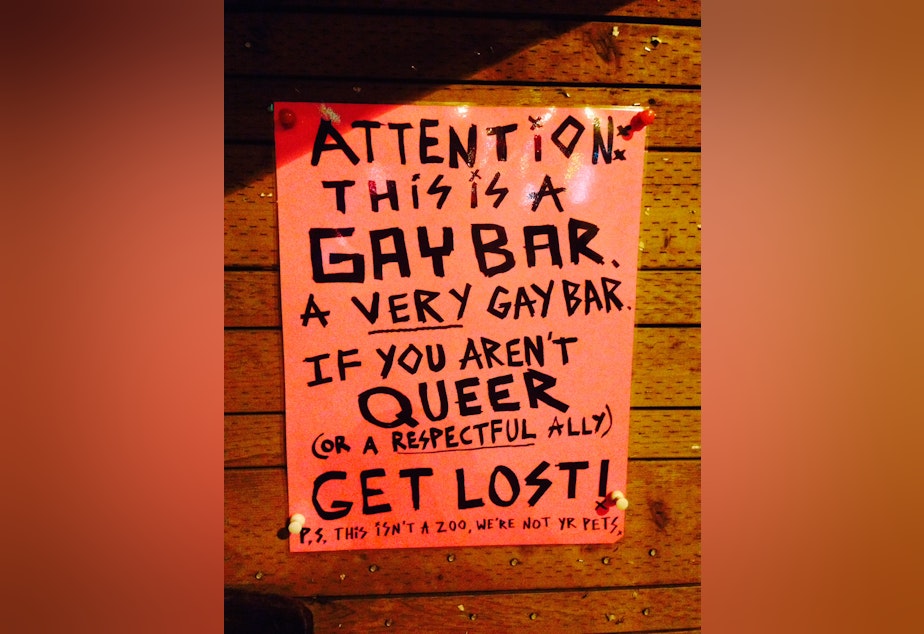Why Is Capitol Hill No Longer The Gay Epicenter Of Seattle?

There’s a bright pink sign that hangs on the front door of Pony, a gay bar on Capitol Hill:
“Attention: This is a gay bar. A very gay bar. If you aren't queer (or a respectful ally), get lost. This isn't a zoo and we're not your pets.”
Pony manager Marcus Wilson made that sign in response to Capitol Hill’s changing demographics – from gay to increasingly straight.
“Capitol Hill has become what Pioneer Square was a few years ago. It has become so overwhelmingly popular with young straight 20-somethings,” he said. “They have this ‘attack, dominate’ mentality, and they don't even necessarily know what this place is. It's just yet another stop on this drunken bar crawl.”
The numbers support his claim. Capitol Hill is known as the center of Seattle gay culture, but according to the U.S. Census, the number of same-sex couples in Capitol Hill's Broadway district has decreased to 1.6 percent from 5 percent in 2000.
Sponsored
Amin Ghaziani, an associate professor of sociology at the University of British Columbia, has analyzed the changing role of gay neighborhoods in his new book, "There Goes the Gayborhood.” Ghaziani said gayborhoods began as refuges for LGBT people from heterosexual culture.
“Gayborhoods in the United States first formed following World War II,” he said, “when gay men and lesbians who were discharged from the military as a result of their real or perceived homosexuality decided to remain behind in major urban centers rather than returning home disgraced.”
These areas flourished some decades later following the Stonewall riots of 1969. The 1970s and 1980s marked a moment in time that demographers refer to as the Great Gay Migration.
Ghaziani said gays and lesbians have often been involved in the early stages of urban revitalization or renewal. Lesbians, he said, typically pave the way. One sociologist characterized lesbians as the “canaries in the urban coal mine.”
Ghaziani listed two reasons gayborhoods are losing their edge: Gays and lesbians are being priced out. Contrary to stereotype, he said, same-sex couples earn on average $15,000 less annually than opposite sex households.
Sponsored
But others are evolving out, he said, “What I call a sense of cultural sameness – people's sexual orientation no longer forms the central defining aspect of their self.”
This segment originally aired August 22, 2014.
